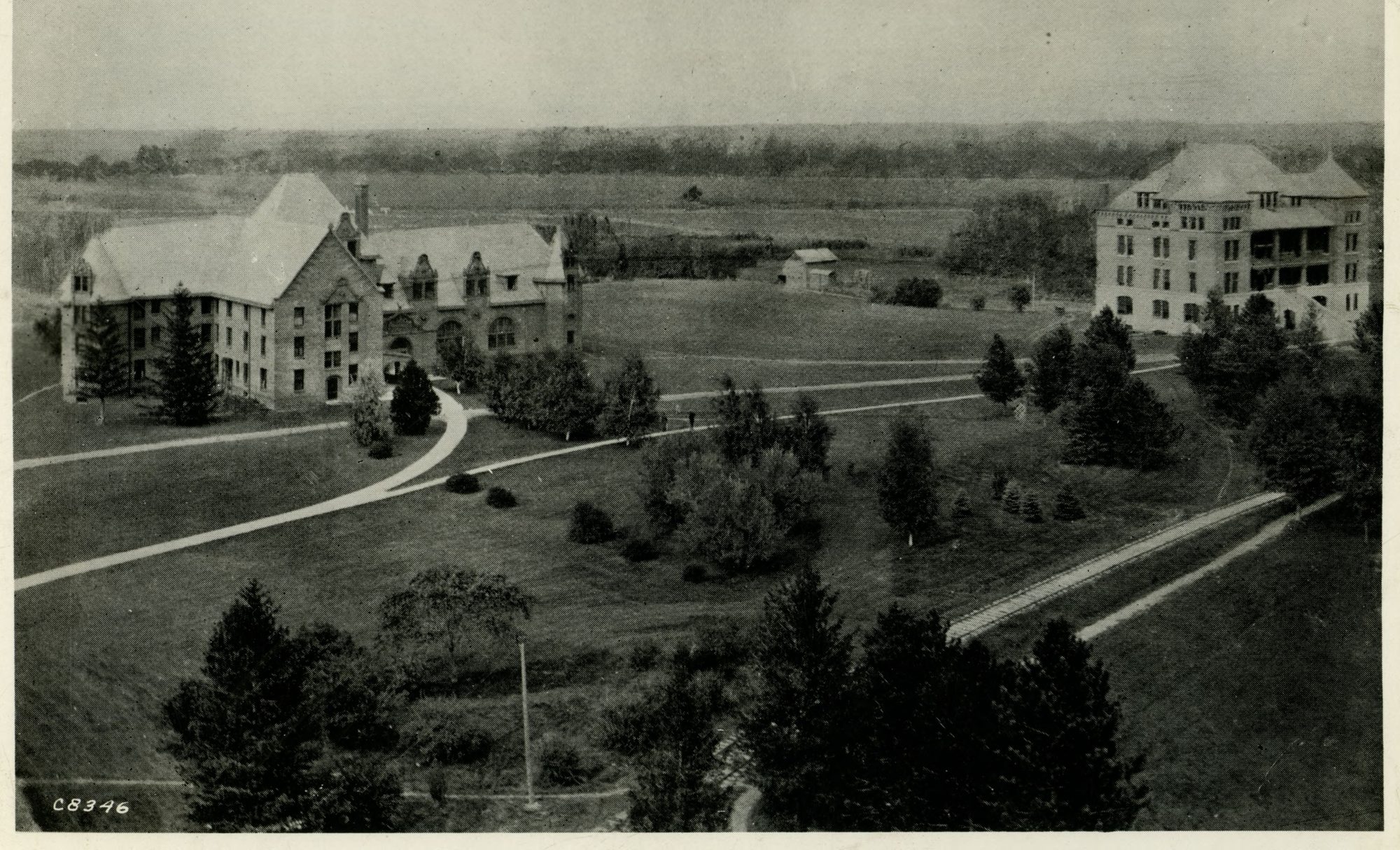One of our manuscripts collections is the Rural Coalition records (MS-0368), a national alliance of regionally and culturally diverse organizations concerned with rural issues, formed in 1978 to provide a national, unified voice for rural people and their communities. In its early years, the organization began a relationship with representatives from American Indian communities in the United States, leading to the founding of the Native American Task Force (also, variously called the American Indian Task Force by internal documents), one of the five task forces that guided the work of the Rural Coalition in the mid-1980s.
A number of documents in the collection record the steady development and growing momentum from the task force’s beginning as the spark of an idea, through its initial organization and development.
In a letter dated June 3, 1985, Kathryn Waller, Chair of the Board of Directors of the Rural Coalition, outlined the history and beginnings of the task force:
![I am writing to you about an exciting development that emerged at our just completed 1985 Annual Meeting of the Rural Coalition. A number of Native American representatives attended the Meeting and met extensively and fruitfully with our leadership. The result is that we have unprecedented opportunity to develop a strong positive relationship between Native Americans and other constituencies in the Rural Coalition. This relationship stands in contrast to the many conflicts between Native Americans and other rural people in the past. [new paragraph] There are a number of steps that need to take place in order to firm up the potential of the budding development. The first steps have already been taken and affirmed by the Rural Coalition Board of Directors on May 22nd. These steps include: (1) the establishment of a Native American Task Force within the Rural Coalition; (2) a commitment from the Board and national staff to assist in furthering the development of the Task Force; and (3) initial provision of fundraising, logistical and staff support to the Task Force.](https://isuspecialcollections.wordpress.com/wp-content/uploads/2019/11/ms368_15-33_clipped.jpg?w=525&h=300)
After the initial meeting between Native individuals and the Rural Coalition leadership, the Native American Task Force held its inaugural meeting a year later, June 12-15, 1986, in Rapid City, South Dakota. The roster of participants includes twenty-four people from twelve states, including people from the Yakima Nation, the Oglala Sioux Tribe, the Oyate Tribe, the Rosebud Sioux Tribe, as well as representatives from non-profit organizations and individuals.
A few months after the task force’s first meeting, they issued a “Statement of Principles — Statement of Purpose” document, dated September 1986. This statement consisted of eight points:
- We will work to insure a safe environment for our children and future generations;
- We are dedicated to the survival of the Indian Nations;
- We will stand together to fight for the protection of our land and resources;
- It is our intention to uphold and enforce our treaty rights and the inherent rights of Indians;
- We will advocate tribal sovereignty;
- We will devise many ways and means to educate and inform Indians and non-Indians to the immediate and to the far-reaching concerns of Indian country;
- We will work to promote economic self-sufficiency without exploitation for Indian tribes, Indian groups and Indian persons;
- We will look to the confirmation of international recognition of Indian nations and Indian inherent rights.
The following year, in October 1987, an official one-page prospectus of the task force outlined specific areas of focus (“Indian Water Quality, Native Lands, Indian Agriculture”) and activities (“lobbying for specific legislation, research and policy analysis, advocating public policy positions, training and technical assistance to selected Native communities and educating non-Indian rural Americans and others on Indian issues”), with a call at the end for more members.
![[On Rural Coalition letterhead] American Indian Task Force of the Rural Coalition. [New paragraph] Formed in 1986, the American Indian Task Force is one of five standing task forces of the Rural Coalition, a national alliance of some 140 memberorganizations banded together to advocate policies to benefit rural people. The Task Force currently has projects on Indian Water Quality, Native Lands Indian Agriculture and other program areas. Task Force members and professional staff design and carry out these projects which involve lobbying for specific legislation, research and policy analysis advocating public policy positions, training and technical assistance to selected Native communities and education non-Indian rural Americans and others on Indian issues. [new paragraph] The Task Force currently has 14 members drawn from all segments of Indian communities. Its membership includes elected Tribal officials, Tribal staff, representatives of non-profit organizations, professionals from several fields and people from both newly-recognized and non-federally-recognized Tribes. [new paragraph] Mr. Pat Bellanger (Chippewa) and Mr. Pat Moss (Cherokee) Chair the American Indian Task Force. Ms. Bellanger is also Vice Chair of the Rural Coalition's Board of Directors. Other Coalition Task Forces are Agriculture, Natural Resources, Jobs, Community Development and Military Issues. [new paragraph] The American Indian Task Force is expanding in 1987-88. Those interested in possible Task Force membership or more detailed information should contact George Coling, Rural Coalition, 2001 S Street, N.W., Suite 500, Washington, D.C. 20009, 202/483-1500. October 1987](https://isuspecialcollections.wordpress.com/wp-content/uploads/2019/11/ms368_24-30_onepager.jpg?w=525&h=686)

The Rural Coalition records in our holdings include a large number of subject files in which is collected background information on a number of issues of interest to the task force, including groundwater issues as well as a number of other issues, including Indian airspace, gaming legislation, Native American Fisheries, treaty rights, and economic development, among others.
These Rural Coalition records in our holdings currently end at the year 1990, but these records give insight into a growing area of focus for the organization.
